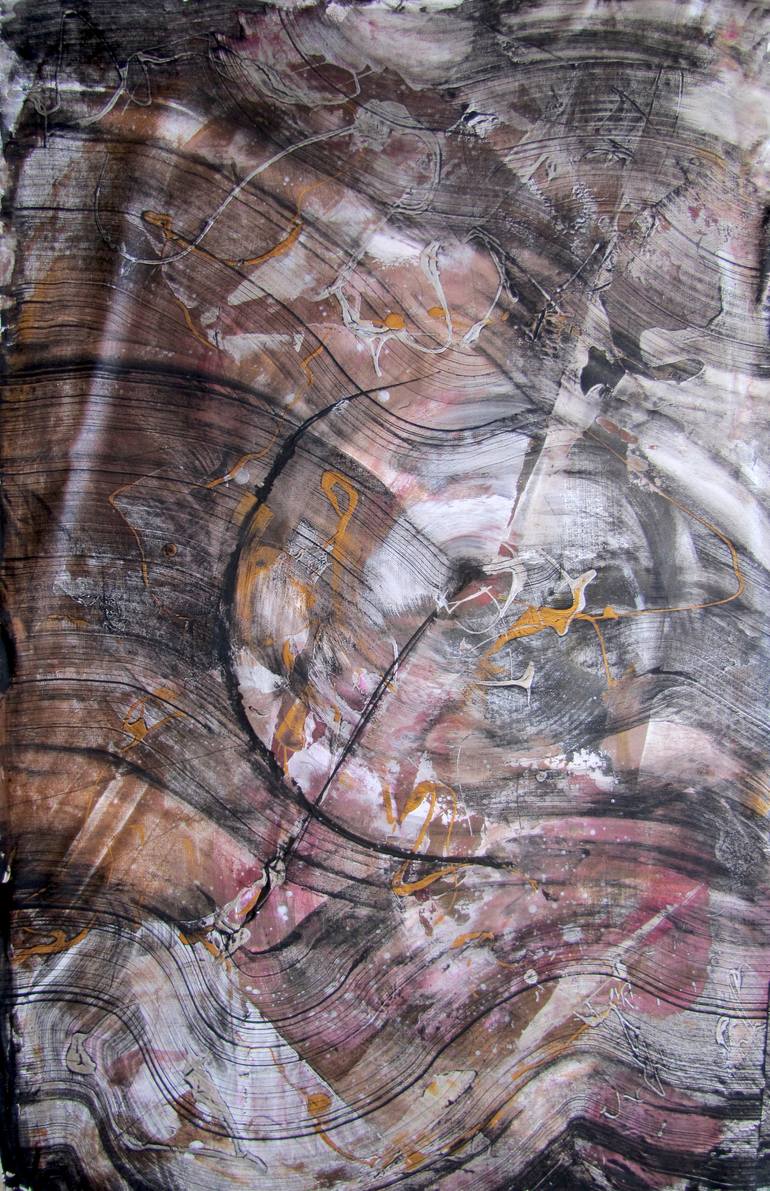





VIEW IN MY ROOM
Golden Ratio Abstract, original painting Painting
Canada
Painting, Acrylic on Canvas
Size: 31.5 W x 39.4 H x 0 D in
Ships in a Tube
Shipping included
14-day satisfaction guarantee
Artist Recognition

Artist featured in a collection
About The Artwork
The golden ratio is also called the golden mean or golden section (Latin: sectio aurea). Other names include extreme and mean ratio, medial section, divine proportion, divine section (Latin: sectio divina), golden proportion, golden cut, and golden number. Some twentieth-century artists and architects, including Le Corbusier and Dali, have proportioned their works to approximate the golden ratio—especially in the form of the golden rectangle, in which the ratio of the longer side to the shorter is the golden ratio—believing this proportion to be aesthetically pleasing. The golden ratio appears in some patterns in nature, including the spiral arrangement of leaves and other plant parts. Leonardo da Vinci's illustrations of polyhedra in De divina proportione (On the Divine Proportion) and his views that some bodily proportions exhibit the golden ratio have led some scholars to speculate that he incorporated the golden ratio in his paintings. But the suggestion that his Mona Lisa, for example, employs golden ratio proportions, is not supported by anything in Leonardo's own writings. Similarly, although the Vitruvian Man is often shown in connection with the golden ratio, the proportions of the figure do not actually match it, and the text only mentions whole number ratios. The 16th-century philosopher Heinrich Agrippa drew a man over a pentagram inside a circle, implying a relationship to the golden ratio. This is Original mixed media Abstract painting on canvas Oil, pastel, pencil and Acrylic on canvas.
Details & Dimensions
Painting:Acrylic on Canvas
Original:One-of-a-kind Artwork
Size:31.5 W x 39.4 H x 0 D in
Frame:Not Framed
Ready to Hang:Not applicable
Packaging:Ships Rolled in a Tube
Shipping & Returns
Delivery Time:Typically 5-7 business days for domestic shipments, 10-14 business days for international shipments.
Handling:Ships rolled in a tube. Artists are responsible for packaging and adhering to Saatchi Art’s packaging guidelines.
Ships From:Finland.
Have additional questions?
Please visit our help section or contact us.
Canada
I’m Canadian abstractionist, an artist synesthetes*, Abstract Expressionist. Emotions are very important to me. When you are in art all your life is at this particular moment. It’s like improvisation in music. You need explain all life in one moment, in one phrase, in one white square… Emotion is a relationship with other people. My art is a relationship with others too. I like challenge, I like to make something new every day, on the end I like to win. And more important I like to win Every day. For me to finish my canvas is like red line for the runner or reaching the peak of a mountain for a climber, I will die for this. I love colours, I love paint, and I love canvas, white canvas. I like even prepare canvas for painting, I just love to be an artist. When I’m painting I feel like a runner, marathon 42 km. runner dying for red line, dying to reach the finish line. I feel like the climber whose single goal driving him all the time is to reach the peak of the mountain. I want to succeed. I love to win. I feel myself so liberated when create art. First, because I can produce something that is influence on human’s mood or state of mind, and second, because I can escape this reality. And I like this feeling. My paintings have been sold for years to offices, shops and private residences in Canada, Australia, USA, Europe etc. Up until now in 18 countries. I am continuously developing my style of painting, keeping it interesting for you to come back for another visit. Don’t hesitate to contact me, I will be happy to answer all your questions. Thank you for your interest hope you like it! synesthetes* - Synesthesia in art has referred to a wide variety of Atits experiments that have explored the co-operation of the senses e.g. seeing and hearing; the word synesthesia is from the Ancient Greek, "together," and Aisthēsis, "sensation". In the genres of visual music, abstract film, abstract film, music visualization, audiovisual art and intermedia.
Artist Recognition

Artist featured by Saatchi Art in a collection
Thousands Of Five-Star Reviews
We deliver world-class customer service to all of our art buyers.
Global Selection
Explore an unparalleled artwork selection by artists from around the world.
Satisfaction Guaranteed
Our 14-day satisfaction guarantee allows you to buy with confidence.
Support An Artist With Every Purchase
We pay our artists more on every sale than other galleries.
Need More Help?